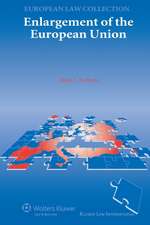Indigenous Rights in Modern Landscapes: Nordic Conservation Regimes in Global Context
Editat de Lars Elenius, Christina Allard, Camilla Sandströmen Limba Engleză Hardback – 21 noi 2016
| Toate formatele și edițiile | Preț | Express |
|---|---|---|
| Paperback (1) | 258.63 lei 6-8 săpt. | |
| Taylor & Francis – 30 iun 2020 | 258.63 lei 6-8 săpt. | |
| Hardback (1) | 822.36 lei 6-8 săpt. | |
| Taylor & Francis – 21 noi 2016 | 822.36 lei 6-8 săpt. |
Preț: 822.36 lei
Preț vechi: 1141.91 lei
-28% Nou
Puncte Express: 1234
Preț estimativ în valută:
157.38€ • 163.70$ • 129.92£
157.38€ • 163.70$ • 129.92£
Carte tipărită la comandă
Livrare economică 14-28 aprilie
Preluare comenzi: 021 569.72.76
Specificații
ISBN-13: 9781472464927
ISBN-10: 1472464923
Pagini: 248
Ilustrații: 9
Dimensiuni: 174 x 246 x 20 mm
Greutate: 0.59 kg
Ediția:1
Editura: Taylor & Francis
Colecția Routledge
Locul publicării:Oxford, United Kingdom
ISBN-10: 1472464923
Pagini: 248
Ilustrații: 9
Dimensiuni: 174 x 246 x 20 mm
Greutate: 0.59 kg
Ediția:1
Editura: Taylor & Francis
Colecția Routledge
Locul publicării:Oxford, United Kingdom
Cuprins
Introduction (Lars Elenius) Part 1: Legislation and Historically Changed Policies within Sápmi Chapter 1. Nordic Legislation on Protected Areas: How does it affect Sami customary rights? (Christina Allard) Chapter 2. Conceptions of Ethnicity and Nature Conservation in Reindeer Herding Areas in Sweden and Finland (Lars Elenius) Chapter 3. Rights of the Naturised (Tore Anderssson) Chapter 4. Protecting Sacred Sites, Maintaining Cultural Heritage, and Sharing Power: Co-management of the SGang Gwaay UNESCO World Heritage Site in Canada (Thora Herrmann, Leena Heinämäki & Cindy Morin) Chapter 5. Land Rights as the Prerequisite for Sámi Culture: Skolt Sámi’s Changing Relation to Nature in Finland (Panu Itkonen) Chapter 6. Nature Conservation in Russia: The Case of Indigenous Sami Rights in the Kola Peninsula (Vladislava Vladimirova) Part 2: Governance of Indigenous Space in a Global Context Chapter 7. Reimagining Governance for ‘Yellowstone’ Modeled National Parks in the New Era of Indigenous Legal Recognition (Jacinta Ruru) Chapter 8. Engaging with Uncertainty: Shared Governance in Indigenous Conservation Landscapes (Michael Adams) Chapter 9. A Space for Sámi Values? Sámi Reindeer Herding and Norwegian National Parks (Jan Åge Riseth) Chapter 10. International Arenas, Local Space for Agency and National Discourse as Mediator: Protected Areas in Swedish and Norwegian Sápmi (Elsa Reimerson) Chapter 11. World Heritage Bureaucracy – How It Works and How It Affects Indigenous Peoples (Carina Green & Jan Turtinen) Chapter 12. Sami Participatory Rights in Area Protection and Management: The Influence of the Related CBD’s Programme in Finland and Norway (Antje Neumann) Chapter 13. Contrasting Nature, Contrasting Rights -Concluding Remarks (Christina Allard, Elsa Reimerson & Camilla Sandström)
Notă biografică
Lars Elenius (PhD) is Professor of History and Education at Umeå University and Luleå University of Technology, Sweden. His specialist areas of interest are on national minorities and Indigenous people in northern Europe. His research interests generally are on history of education, Indigenous history, historical culture, minoritypolicy, ethnopolicy, nationalism, regionalism, history of northern Europe. He has written widely on these and related topics.
Christina Allard (LLD) is Associate Professor in Law at Luleå University of Technology, Sweden, and at the Faculty of Law, UiT The Arctic University of Norway. Her research interests focus on natural resources use and environmental protection with special emphasis on Indigenous people’s territorial rights as well as comparative legal aspects. She is the leader of the Nordic research network for Sámi and Indigenous people’s law, NORSIL, and has a strong publication record on legal research related to Indigenous rights.
Camilla Sandström (PhD) is a Professor at the Department of Political Science, Umeå University, Sweden. She has a special interest in institutional aspects of natural resource governance and management, including how collaborative governance such as co-management and public private partnerships can be used to handle conflicts and trade-offs between different interests. She is the leader of an interdisciplinary team involved in research on sustainable rural development with a specific emphasis on natural resource management such as protected areas, forests, fish and wildlife.
Christina Allard (LLD) is Associate Professor in Law at Luleå University of Technology, Sweden, and at the Faculty of Law, UiT The Arctic University of Norway. Her research interests focus on natural resources use and environmental protection with special emphasis on Indigenous people’s territorial rights as well as comparative legal aspects. She is the leader of the Nordic research network for Sámi and Indigenous people’s law, NORSIL, and has a strong publication record on legal research related to Indigenous rights.
Camilla Sandström (PhD) is a Professor at the Department of Political Science, Umeå University, Sweden. She has a special interest in institutional aspects of natural resource governance and management, including how collaborative governance such as co-management and public private partnerships can be used to handle conflicts and trade-offs between different interests. She is the leader of an interdisciplinary team involved in research on sustainable rural development with a specific emphasis on natural resource management such as protected areas, forests, fish and wildlife.
Recenzii
The Sami Reindeer herders, whose flocks and cultural landscapes span Norway, Sweden, Finland and Russia, provide, in this book, an ideal comparative basis for understanding indigenous peoples’ key role in breaking the monopoly of bureaucratic, wilderness-fixated nature management regimes, and the uniform, globalized nature conservation these regimes foster. Kenneth R. Olwig, Professor Emeritus, SLU-Alnarp, Department of Landscape Architecture, Planning and Management, Alnarp, Sweden.
Descriere
This book examines the diverse use of indigenous customary rights in modern landscapes. Part I deals with Sámi customary rights in relation to nature conservation in the Nordic countries and Russia. Part II explores the ideas and implementation of new kinds of postcolonial models of nature conservation. Comparisons are drawn with other indigenous people with cases from Australia, New Zealand, Canada and India. The work provides a multidisciplinary analysis of how the customary livelihood of Indigenous people has adapted to modern industrialised landscapes and also how postcolonial approaches have contributed to global changes of indigenous rights and nature conservation models.














